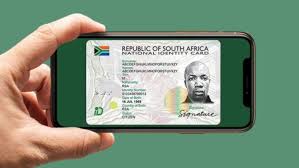As of August 6, 2025, MTN South Africa has launched the country’s first reusable biometric digital ID, now available across all its stores. This marks a significant milestone in identity technology. This report outlines the details of this development, its place within the broader evolution of national identity in South Africa, and its implications for citizens and service delivery.
1. 🆕 MTN’s Biometric Digital ID—What’s New
According to TechAfricaNews, MTN has successfully rolled out a reusable biometric digital ID system across all its stores in South Africa Open Knowledge Repository+1African Billionaires Daily+3FX Leaders+3Business Insider Africa+3. This digital credential is characterized by the following:
- It is securely stored on a digital platform provided by MTN.
- It utilizes biometric data, likely fingerprint or facial recognition, as opposed to static physical cards.
- Its “reusable” nature means users can conveniently carry and present it digitally via a smartphone application, eliminating the need for repeated physical issuance.
- It represents a pioneering identity solution delivered by a telecommunications provider in South Africa.
While the full scope of the program is still emerging, MTN’s initiative reflects a broader national drive towards digital identity innovations.
2. 🏛️ Why Digital IDs Matter — South Africa’s Identity Context
a) From Apartheid Tools to Inclusive IDs
During the apartheid era, identity systems, including pass laws and Identity Books, functioned as instruments of restriction and surveillance. Black and other non-white citizens were compelled to carry pamphlets and cards that dictated where they could reside and work. These tools were instrumental in facilitating forced removals and widespread repression Wikipediathisbugslife.com.
Following the advent of democracy in 1994, the new government embarked on a journey to establish a more inclusive national ID system, progressively moving towards standardized documentation free from racial coding SpringerLinkOpen Knowledge Repository.
b) Green Barcoded ID Book & Smart ID Card
The long-standing green barcoded ID book, initially introduced in the 1950s for specific racial groups, remained in nationwide use until recently. It contained personal details and, historically, racial classification codes embedded within the ID number
In 2013, the government introduced the plastic Smart ID Card, which features:
Embedded biometric features (fingerprint, photo) and microchips.
Enhanced forgery resistance and security.
Issuance to all citizens and permanent residents aged 16 and above.
It is currently in the process of replacing the green booklet, with a full phase-out anticipated between 2029 and 2031
c) National Identity Number Format
The standard 13-digit South African ID number adheres to the structure YYMMDD SSSS C A Z:
YYMMDD: Represents the date of birth.
SSSS: A daily sequence number (0–4999 for females, 5000–9999 for males).
C: Indicates citizenship status (0 = citizen, 1 = permanent resident).
A: A historical racial code (now consistently 8 or 9 post-1994).
Z: A checksum digit calculated using the Luhn algorithm thisbugslife.com+3Wikipedia+3Wikipedia+3.
This ID number is fundamental for accessing public services, banking, employment, voting, and social grant systems like SASSA Wikipedia+2sagovinfo.co.za+2.
d) Digital Transformation: HANIS & Biometrics
The Home Affairs National Identification System (HANIS) and the integration of NEC’s biometric AFIS system signify a crucial shift from paper-based files (over 45 million physical records) to a digital national registry. These systems facilitate real-time fingerprint searches, significantly reduce identity fraud, and streamline the processes of identity issuance and verification Wikipedia.
3. 🔎 Comparing MTN’s Digital ID with Government Identity Systems
MTN’s biometric ID primarily focuses on providing convenient, reusable identity verification for its customers, potentially supporting mobile onboarding, SIM registration, micro-payments, or other digital services.
In contrast, government IDs serve as universal proof of identity, legally mandated for a wide array of official purposes.
4. 🚀 Why MTN’s Rollout Is Significant
Private-sector innovation: MTN’s entry into identity solutions highlights the increasing role of mobile operators in developing digital public infrastructure.
Digital-first credential: A reusable digital ID reduces reliance on physical cards and allows for easier updates.
Biometric coverage: This strengthens verification processes and helps reduce fraud in areas like SIM registrations, grant applications, and e-government services.
Catalyst for broader adoption: If successful, MTN’s model could pave the way for future partnerships with the state ID system.
5. 📜 Evolution of South Africa’s ID System
a) Pass Laws & Dompas (19th century–1986)
Passbooks, commonly known as “dompas,” were instrumental in enforcing restrictions on Black movements and formed a foundational element of the apartheid regime’s control apparatus
b) Green Barcoded ID Book (1950s–today)
Initially issued to white citizens and later extended, this document embedded racial coding into ID numbers and reinforced exclusionary systems Bulawayo24 Newsthisbugslife.com.
c) Smart ID Card (launched 2013)
Modernization efforts led to the introduction of embedded biometrics, microchips, and more secure authentication. The ongoing phase-out of the green book ensures a robust, forgery-resistant national ID
d) HANIS and Digital Registry
The transition to digital identity, supported by fingerprint databases and home-based verification, enabled integrated citizen registers and reduced reliance on paper records WikipediaOpen Knowledge Repository.
e) Private Identity Initiatives (2025–)
MTN’s rollout represents a new phase: private-sector enabled digital identity verification, linked to telecom services and providing reusable, biometric-based credentials.
6. ✅ What This Means for South Africans
Convenience & accessibility: Users can verify their identity via a smartphone, which is particularly beneficial for remote or underserved areas.
Fraud reduction: Biometric authentication significantly increases the difficulty of spoofing and document forgery.
Digital access: New digital identities can facilitate easier onboarding for mobile services, grants, and e-commerce platforms.
Transition risk: The coexistence of multiple ID types (green book, smart card, digital ID) may lead to confusion, necessitating coordinated phasing strategies.
7. 🕓 Outlook: What Comes Next
Wider adoption: Should MTN’s initiative prove successful, other operators and fintech firms may follow suit with similar systems.
Government partnerships: Potential integration with Home Affairs systems could lead to digitized national IDs.
Regulatory oversight: Clear standards for data privacy, storage, and verification will be crucial, especially concerning biometric data.
User education: It is essential that South Africans are well-informed about how to use digital IDs, manage legacy cards, and protect their biometric data.
8. 🧭 In Summary
South Africa’s identity system has evolved significantly, from exclusionary passbooks and racially coded ID numbers to a biometric smart card system. Now, private-sector digital identity innovations, such as MTN’s biometric digital ID, mark a new chapter. This reusable, biometric solution, tied to telecom services, enhances identity verification accessibility for millions. It builds upon decades of reform and infrastructure investments, signaling a new era where physical cards may transition towards secure electronic credentials.











